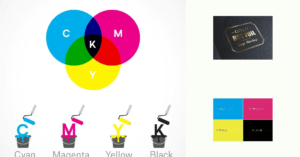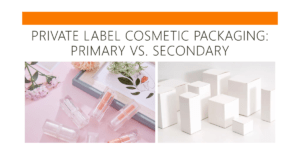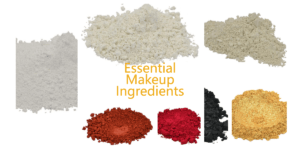In today’s beauty-conscious world, cosmetic formulations play a pivotal role in defining the success of a beauty product. Consumers are increasingly seeking effective skincare and cosmetic products that not only enhance their appearance but also nourish and protect their skin. In this article, we will delve deep into the fascinating world of cosmetic formulations, uncovering the secrets behind creating products that leave a lasting impression.
Table of Contents
Understanding the Basics: What Are Cosmetic Formulations?
Before we dive into the intricacies, it’s essential to grasp the fundamental concept. Cosmetic formulations refer to the precise blend of ingredients, carefully crafted to create skincare and beauty products. These formulations can encompass a wide range of products, from moisturizers and serums to makeup items such as foundations and lipsticks.
The Importance of Quality Ingredients
The foundation of any effective cosmetic formulation lies in the selection of high-quality ingredients. Skimping on ingredient quality can lead to subpar products that not only fail to deliver results but may also harm the skin. Manufacturers must prioritize sourcing ingredients that are safe, effective, and compatible with various skin types.

The Art of Balancing Act: Key Components
Successful cosmetic formulations require a delicate balance between various components. Let’s take a closer look at the key players in this intricate dance:
1. Active Ingredients
Active ingredients are the key components in a product that are responsible for delivering the desired benefits. They are the stars of the show, so to speak. For example, if you’re looking for a product that brightens the skin, vitamin C is a popular active ingredient known for its brightening properties. On the other hand, if you’re in need of hydration, hyaluronic acid is a commonly used active ingredient known for its moisturizing abilities.
Choosing the right active ingredients for your skincare routine is crucial because they determine the effectiveness of the product. Different active ingredients target different concerns, so it’s important to understand what your skin needs and select products accordingly. Whether you’re dealing with dullness, dryness, acne, or signs of aging, there are active ingredients available to address those specific issues.
When selecting products, it’s also important to consider the concentration of the active ingredient. Some products may contain a lower concentration, which may not provide the desired results. On the other hand, some products may contain a higher concentration, which can be too harsh for certain individuals with sensitive skin. It’s all about finding the right balance for your skin’s needs.
In conclusion, active ingredients play a vital role in skincare products. They are responsible for delivering the desired benefits and addressing specific skin concerns. By understanding your skin’s needs and selecting products with the right active ingredients and concentrations, you can effectively enhance your skincare routine and achieve healthier, more radiant skin.
2. Emollients and Humectants
Emollients are substances that help to soften and smooth the skin by filling in the gaps between skin cells. They create a protective barrier on the skin’s surface, preventing moisture loss and keeping the skin hydrated. Common emollients include oils, butters, and waxes.
Humectants, on the other hand, are ingredients that attract and retain moisture from the environment. They help to increase the water content in the skin, keeping it plump and moisturized. Humectants can be found in many skincare products, such as glycerin, hyaluronic acid, and propylene glycol.
Together, emollients and humectants work synergistically to provide hydration and lock in moisture. Emollients create a smooth and soft surface on the skin, while humectants attract and bind water to the skin, preventing dryness and maintaining its suppleness.
Using products that contain emollients and humectants can be beneficial for all skin types, especially those with dry or dehydrated skin. These ingredients help to restore the skin’s natural moisture balance and improve its overall texture and appearance.
In summary, emollients and humectants are essential components of skincare products that provide hydration and lock in moisture. They are vital for preventing dryness and keeping the skin supple and soft.
3. Preservatives
Preservatives play a crucial role in cosmetic products by extending their shelf life and maintaining their stability and safety for use over time. These ingredients are added to prevent the growth of microorganisms such as bacteria, fungi, and mold, which can spoil the product and potentially cause harm to the user.
Cosmetic products, especially those containing water or water-based ingredients, are prone to microbial contamination. This is because microorganisms thrive in moist environments, making cosmetics an ideal breeding ground for them. Without preservatives, these microorganisms can multiply and lead to product spoilage, unpleasant odors, changes in texture or appearance, and even potential health risks.
Preservatives work by inhibiting or killing the microorganisms present in the product. They can be classified into two main categories: antimicrobial preservatives and antioxidants. Antimicrobial preservatives, as the name suggests, prevent the growth of microorganisms. They are typically effective against a broad spectrum of bacteria, yeast, and mold. Antioxidants, on the other hand, help prevent the oxidation of the product’s ingredients, which can lead to degradation and spoilage.
Commonly used preservatives in cosmetics include parabens (such as methylparaben and propylparaben), phenoxyethanol, benzyl alcohol, formaldehyde releasers (such as DMDM hydantoin and imidazolidinyl urea), and organic acids (such as benzoic acid and sorbic acid). These preservatives have been extensively tested for safety and efficacy to ensure that they do not cause harm to consumers when used as directed.
It is important to note that preservatives are regulated by various authorities, such as the U.S. Food and Drug Administration (FDA) and the European Union’s Cosmetics Regulation. These regulations set maximum allowable concentrations for preservatives and require manufacturers to conduct safety assessments before using them in cosmetic products.
While preservatives are necessary for ensuring the safety and stability of cosmetic products, some individuals may have sensitivities or allergies to certain preservatives. It is important for consumers to read product labels and consult with healthcare professionals if they have any concerns or known allergies.
In summary, preservatives are essential components of cosmetic products that help extend their shelf life and maintain their safety and stability over time. They prevent the growth of microorganisms and protect against product spoilage and potential health risks. However, it is important for manufacturers to use approved preservatives at safe concentrations and for consumers to be aware of any potential sensitivities or allergies they may have.
4. Fragrance and Colorants
Fragrance and colorants are commonly added to cosmetic products to improve the overall sensory experience. Fragrances can provide a pleasant scent, while colorants can enhance the visual appeal. However, it is important to select these ingredients with caution to prevent potential skin sensitivities.
When it comes to fragrances, certain individuals may have allergies or sensitivities to specific scents. These reactions can range from mild irritation to more severe symptoms such as redness, itching, or even dermatitis. It is crucial to choose fragrances that are hypoallergenic or free from known allergens to minimize the risk of adverse reactions.
Similarly, colorants can also cause skin sensitivities in some individuals. Certain dyes or pigments may contain substances that can irritate the skin or cause allergic reactions. To prevent this, it is advisable to opt for colorants that are deemed safe for use in cosmetics and have been tested for skin compatibility.
In addition to selecting the right fragrance and colorants, it is essential to follow proper usage guidelines. This includes using the recommended amount of fragrance or colorant and avoiding excessive or prolonged contact with the skin. Patch testing can also be helpful in identifying potential sensitivities before applying the product to a larger area of the body.
Overall, while fragrance and colorants can enhance the sensory experience of cosmetic products, it is crucial to prioritize safety and choose these ingredients carefully. By selecting hypoallergenic options and following proper usage guidelines, the risk of skin sensitivities can be minimized, allowing individuals to enjoy their cosmetic products without any adverse reactions.
5. Emulsifiers
They are used in cosmetics and personal care products to create smooth and creamy textures. Emulsifiers can be natural or synthetic and can have different properties depending on their chemical structure. Some common examples of emulsifiers include lecithin, mono- and diglycerides, and polysorbate 80. Overall, emulsifiers play a crucial role in many industries by allowing for the seamless blending of oil and water-based components.

The Science Behind It: Formulation Techniques
Creating effective cosmetic formulations is not just an art; it’s also a science. Manufacturers employ various techniques to ensure the product’s stability and effectiveness.
1. Microencapsulation
Microencapsulation is a technique that involves enclosing active ingredients in tiny capsules. This protects the ingredients from degradation and ensures their release over time, enhancing the product’s longevity.
2. pH Balancing
Maintaining the right pH level is critical for skincare products. Proper pH ensures that the product is gentle on the skin and does not disrupt its natural balance.
Innovations in Cosmetic Formulations
The beauty industry is continually evolving, and so are cosmetic formulations. Let’s explore some of the latest innovations that are reshaping the cosmetic world:
1. Clean Beauty
Clean beauty focuses on using natural and non-toxic ingredients. It’s a movement that prioritizes transparency in product labeling and ingredient sourcing.
2. Personalized Formulations
Advancements in technology have paved the way for personalized cosmetic formulations. Brands are now offering customized products tailored to an individual’s unique skin type and concerns.
Conclusion
Unlocking the secrets of effective cosmetic formulations is a journey that combines art, science, and innovation. As consumers become more discerning, the demand for high-quality skincare and beauty products continues to rise. Manufacturers must rise to the challenge, prioritizing ingredient quality, formulation techniques, and innovation to meet the ever-evolving beauty standards.
Now that you’ve gained insights into the world of cosmetic formulations, it’s time to explore the endless possibilities of creating products that not only enhance beauty but also promote healthy and radiant skin.
FAQs
1. Are cosmetic formulations safe for all skin types?
Cosmetic formulations can be tailored to suit different skin types. It’s crucial to choose products that align with your specific skin needs and concerns.
2. What should I look for when reading product labels?
When reading product labels, look for key ingredients, expiration dates, and any allergen warnings. Understanding the ingredients will help you make informed choices.
3. Can I create my own DIY cosmetic formulations at home?
Yes, you can experiment with DIY cosmetic formulations at home, but it’s essential to research and follow safety guidelines to avoid any adverse reactions.
4. How do I know if a product is cruelty-free?
Look for cruelty-free certifications on the product packaging or check the brand’s website for their cruelty-free policy. Many ethical brands proudly display their commitment to cruelty-free practices.
5. What are some upcoming trends in cosmetic formulations?
Some upcoming trends include sustainable packaging, biodegradable ingredients, and advanced AI-driven personalized formulations. Stay tuned for exciting developments in the beauty industry!






